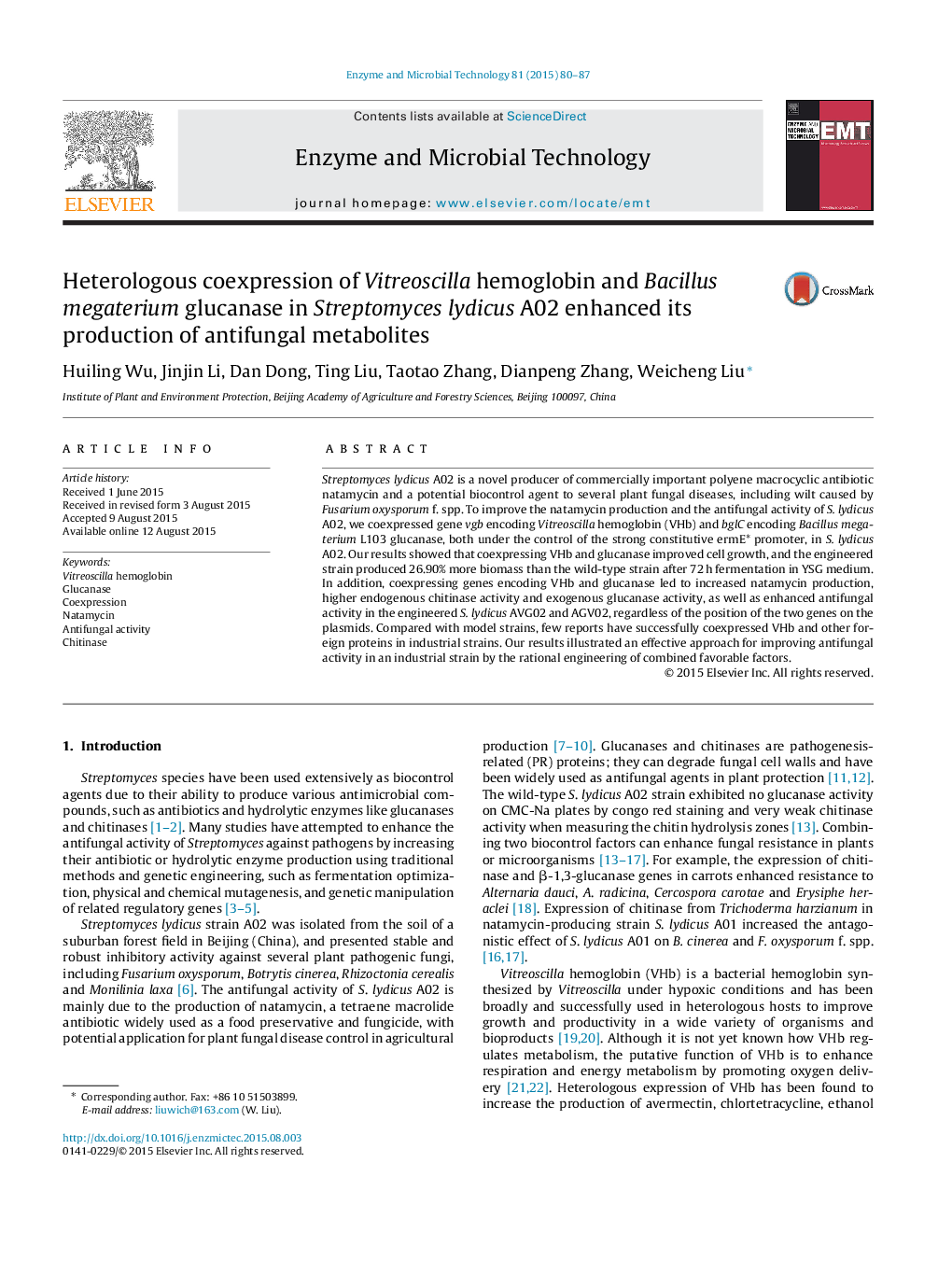| Article ID | Journal | Published Year | Pages | File Type |
|---|---|---|---|---|
| 6488261 | Enzyme and Microbial Technology | 2015 | 8 Pages |
Abstract
Streptomyces lydicus A02 is a novel producer of commercially important polyene macrocyclic antibiotic natamycin and a potential biocontrol agent to several plant fungal diseases, including wilt caused by Fusarium oxysporum f. spp. To improve the natamycin production and the antifungal activity of S. lydicus A02, we coexpressed gene vgb encoding Vitreoscilla hemoglobin (VHb) and bglC encoding Bacillus megaterium L103 glucanase, both under the control of the strong constitutive ermE* promoter, in S. lydicus A02. Our results showed that coexpressing VHb and glucanase improved cell growth, and the engineered strain produced 26.90% more biomass than the wild-type strain after 72Â h fermentation in YSG medium. In addition, coexpressing genes encoding VHb and glucanase led to increased natamycin production, higher endogenous chitinase activity and exogenous glucanase activity, as well as enhanced antifungal activity in the engineered S. lydicus AVG02 and AGV02, regardless of the position of the two genes on the plasmids. Compared with model strains, few reports have successfully coexpressed VHb and other foreign proteins in industrial strains. Our results illustrated an effective approach for improving antifungal activity in an industrial strain by the rational engineering of combined favorable factors.
Related Topics
Physical Sciences and Engineering
Chemical Engineering
Bioengineering
Authors
Huiling Wu, Jinjin Li, Dan Dong, Ting Liu, Taotao Zhang, Dianpeng Zhang, Weicheng Liu,
